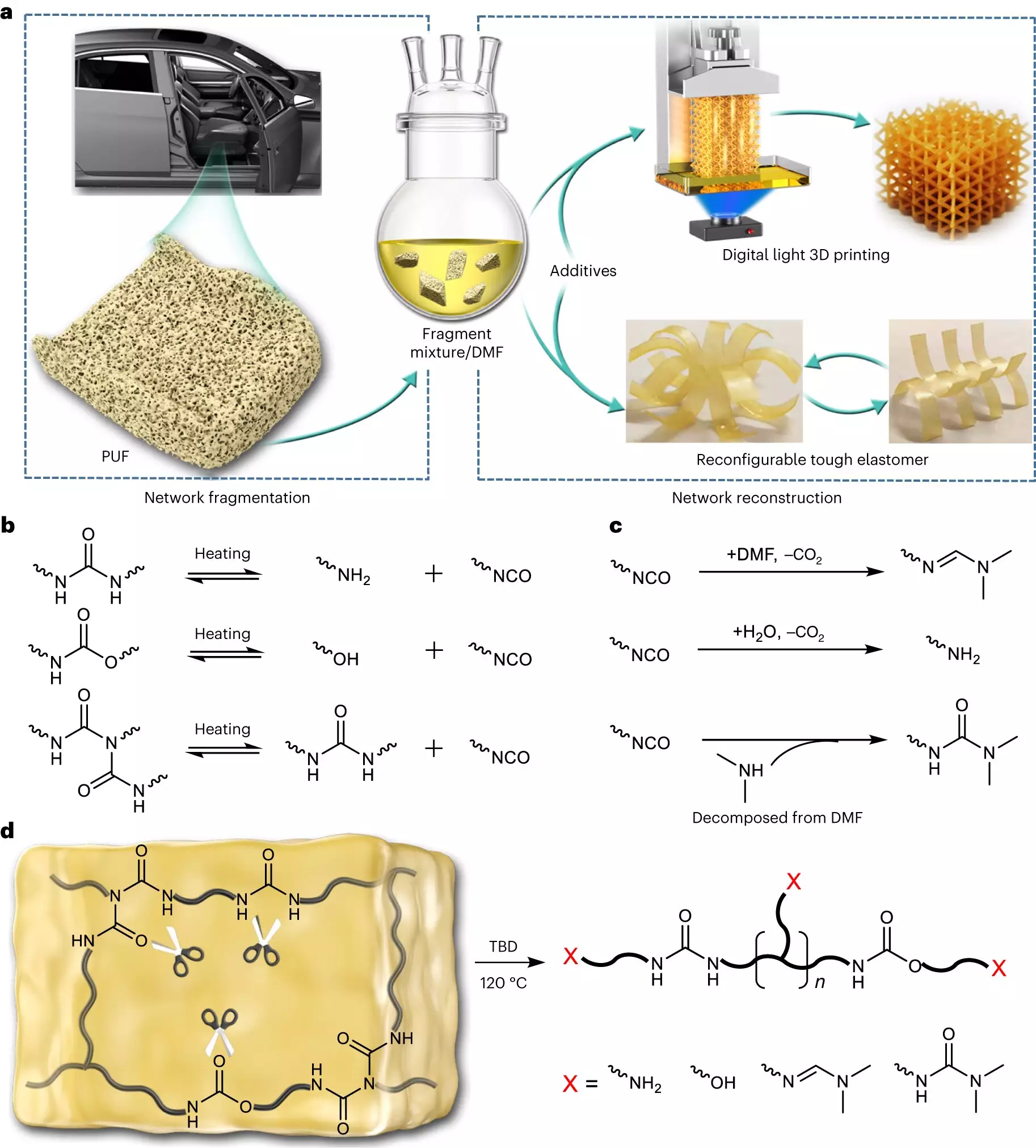A team of chemical engineers at Zhejiang University in China has unveiled a groundbreaking technique to convert polyurethane foams into 3D printing resins. This remarkable discovery, detailed in an article published in Nature Chemistry, presents a potential solution to the significant challenges posed by the recycling of polyurethane foam. By employing a novel chemical upcycling approach, the researchers offer a cost-effective and scalable method to transform discarded materials into high-value products.
Polyurethane foams, commonly known as foam rubber, are widely used in the manufacturing of car seats, couches, and mattresses to enhance comfort. These foams are essentially a type of plastic that expands by infusing gas bubbles into mixtures via a blowing agent. However, the traditional curing process employed in their production makes them significantly difficult to recycle effectively. Current approaches are not only economically unappealing but also yield subpar byproducts, ultimately resulting in the accumulation of waste in landfills.
The team at Zhejiang University has developed an innovative technique referred to as “fragmentation and reconstruction” to tackle the recycling challenges associated with polyurethane foams. The process commences by grinding the foam into tiny particles, which are then immersed in dimethylformamide along with an appropriate catalyst, based on the specific type of foam. The duration of the soaking process is contingent upon the foam being treated. The resulting material serves as a foundation for reconstructing a new polymer network through precuring and post-curing. This transformation leads to the development of a double-network material, capable of serving as a high-quality 3D printing resin or being chemically fragmented, similar to the original foam.
The implications of this research extend beyond the realms of 3D printing. The Zhejiang University team claims that their approach can significantly mitigate the environmental impact of polyurethane foams, reducing the volume of waste accumulation while simultaneously lowering the cost of producing the original materials. This breakthrough not only sets the stage for a more sustainable future but also has the potential to revolutionize the 3D printing industry by providing an affordable and eco-friendly base material for manufacturing intricate objects.
The impact of the research conducted at Zhejiang University extends far beyond polyurethane foams. The chemical engineers suggest that their methodology could be adapted to other materials such as polyesters and epoxies, an exciting prospect for future advancements in sustainable manufacturing. By addressing the recycling challenges posed by a wider range of materials, this groundbreaking research paves the way for a more circular economy, promoting the efficient use of resources and minimizing harmful waste.
The chemical engineers at Zhejiang University have unveiled a remarkable breakthrough in the field of polyurethane foam recycling. Through their innovative fragmentation and reconstruction approach, they have demonstrated a cost-effective and scalable solution to transform discarded polyurethane foams into high-value 3D printing resins. This research not only offers promising environmental benefits but also opens the door to further advancements in sustainable manufacturing practices.


Leave a Reply